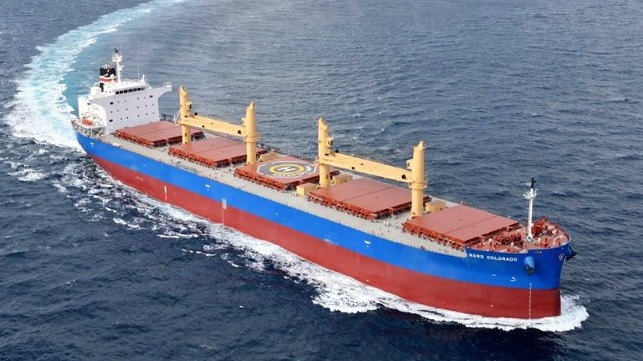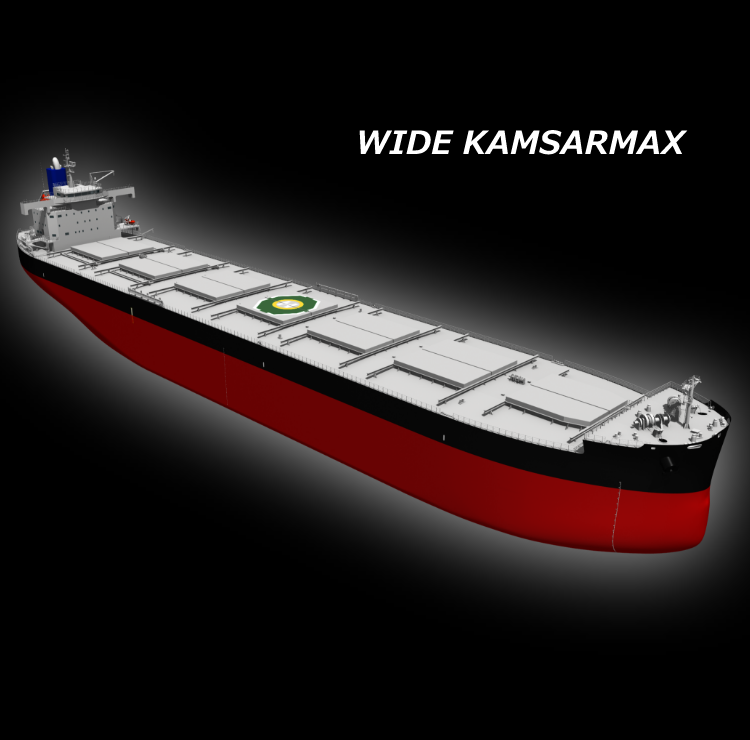Seagoing Bulk Carrier: General Use and Purpose
The operation of bulk carriers was not without dangers. The most important shipboard issues need cautious planning and prudence. This site will provide an immediate guideline to the global shipping industry and provide information about loading and discharging various bulk cargo kinds. It is to stay within the restrictions set by the classification organisation. It is essential to make sure that the ship's structure is not stressed and all safety precautions are taken in order to ensure the safety of passage at sea. Our detail pages contain various bulk carrier-related topics that might be useful for those working onboard and those working at ashore at the terminal.
General features of bulk seaship vessels
Bulk carriers may be single-deck vessels. They are equipped with top-side tanks as well as side tanks that hoppers can use. These tanks are used in cargo areas. They are built to carry solid bulk cargo. Anything that isn't gas or liquid, but is a solid bulk cargo, that is any substance made up of a mixture of granules or granules or any other substance with an uniform composition. It can be put directly into the cargo space of a ship and does not require storage. Dry cargo can include sugar, bulk grains, and even ore. In its broadest sense the term "bulk carrier" encompasses all vessels designed for the carriage of solid or liquid cargo in bulk form, and so would include tankers. The term bulk carrier is commonly used to describe vessels that are built to carry bulk cargos. This includes grain, similar agricultural products, and minerals such as coal ore and stone , on some or all of the voyage legs. Peruse this
bulk carriers specialist for more.

What Exactly Is A Bulk Carrier? The Following Are The Main Features Of Bulk Carriers:
"A ship which is intended primarily to carry dry cargo in bulk, including such types as ore carriers and combination carriers"
The capacity of carrying varies between 3,000 and 300,000 tonnes
-Average speed of 12 15 knots
-Single deck ships, ie no tweendecks
Carriers of medium to small size bulk (carrying capacities between 40 and 60,000 tonnes) typically come with cargo handling gear. However, larger vessels can use docks to load and unload.
The cargo hold is usually big, with no obstructions. They also have large hatch sizes that allow for the easy loading and unloading of cargoes
The ballast holds are a typical element on bulk carriers. It can be used to improve stability on ballast voyages. Some additional holds could be allowed for partial ballasting, but only in port
They are covered with single pull or hydraulic or stacking (piggyback) style steel hatch covers
Ballast tanks of different types
Sloping topside wing tanks
Tanks with a sloping bottom
Double bottom tanks
Post peak and peak peak ballast water tanks
Bulk solid cargo? Solid bulk cargo refers to anything other than liquids or gases that is made up of particles, grains, or larger pieces and which can be placed directly into the cargo area without additional container. Bulk carriers can carry various cargoes including "clean" food products and "dirty", minerals, in addition to cargoes that could react with one another or other contaminants, such as water. It is important to ensure that space is cleaned for each item. Surveyors are often required to inspect the space and determine if the space is suitable to be loaded. To avoid contamination, it is vital that any residues left behind by previous cargoes be eliminated. The bulk cargo is the most susceptible to damage from water. This implies that the hold must be dry in order to allow cargo to enter. Furthermore hatch covers need to be sealed and watertight if required to stop water from entering. All fittings within the storage area (ladders and pipe guards, bilge cover and bilge cover.) are to be checked. It is crucial to examine all fittings in the hold for cargo (ladders and pipe guards, etc.) and make sure they are properly installed. They could cause severe wear and tear to conveyor belts, which could cause delays. If the equipment is discharged accidentally with cargo, the ship could be held liable. Check out this
capesize bulk carrier site for more.

Bulk Carrier, Bulker Bulk Carrier, Bulker A vessel that is able to transport dry cargo. It is not intended to function as a liquid bulk carrier or tanker. The conventional bulk carrier has one deck and a single skin. Bulk carriers can carry any bulk cargo that ranges from heavy ore to light grains, up to an maximum weight. The loading, carriage and finally the discharge of bulk cargo that is dry isn't as easy or straightforward as many people would imagine.
Gearless Bulk Carrier
A lot of bulk cargoes may be dangerous or alter their properties during transport. Improper loading could lead to the ship to be damaged easily. loading an forward hold to its maximum could result in the vessel to bend. This is called stress? could have fatal consequences when the weather is rough at sea. Other cargoes could also be affected by residues of previous cargoes. Certain bulk cargoes like cement power, can also suffer from water damage. cement power. It's not always simple to confirm the exact weights of cargoes that have been loaded or removed. These factors can have severe implications for the safety of bulk cargoes. Discharging bulk cargo using? bulk cargoes are prone to having the tendency of forming a cone once they are loaded if conveyor belts or similar systems aren't supervised and monitored. The angle at which the cone creates is known as the angle or repose'. It varies for each cargo. Iron ore cargoes will form a steep-angled cone while cargoes that flow freely will form a shallow-angled cone. cargoes with lower angles of repose tend to move more during transit. As the cargo nears completion, bulldozers may have been used to divide the load over a number of holds. Most dry-bulk carriers need to make use of facilities on shore to load cargo and discharge it. But, some bulk carriers have self-unloading facilities, such as conveyors below cargo holds or cranes that go up the deck.

